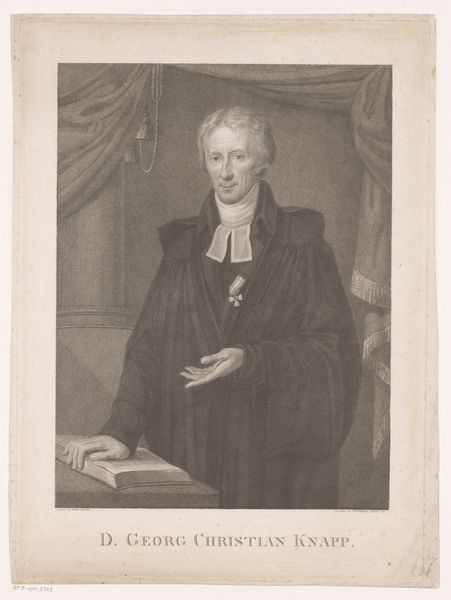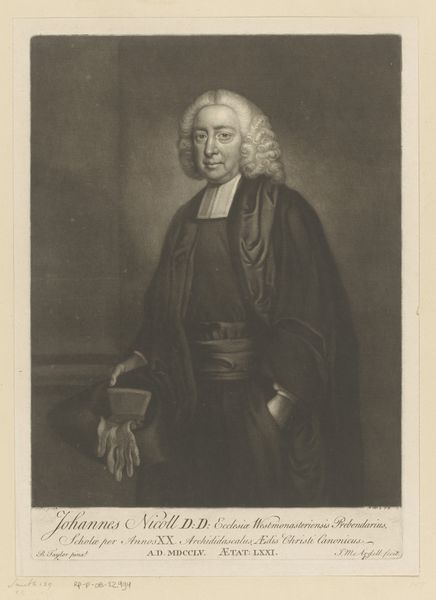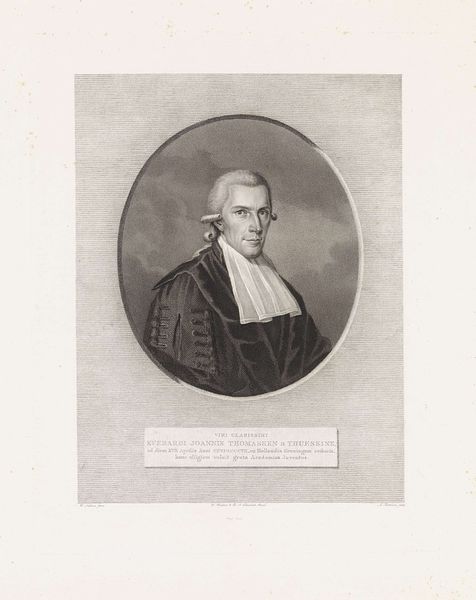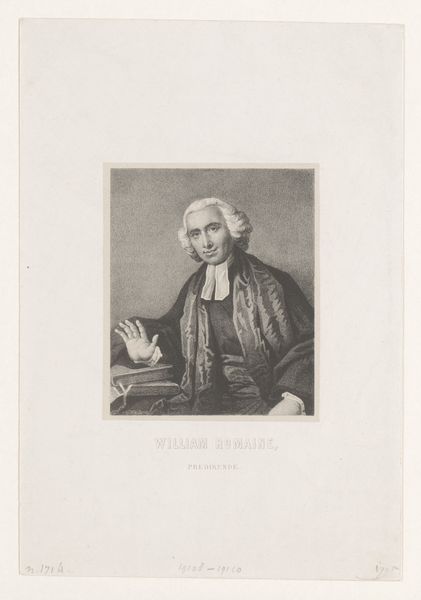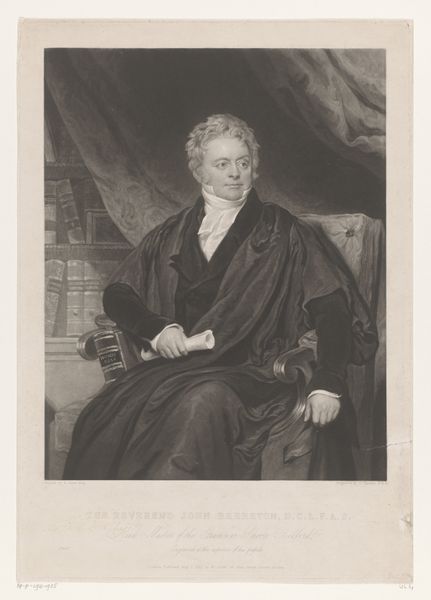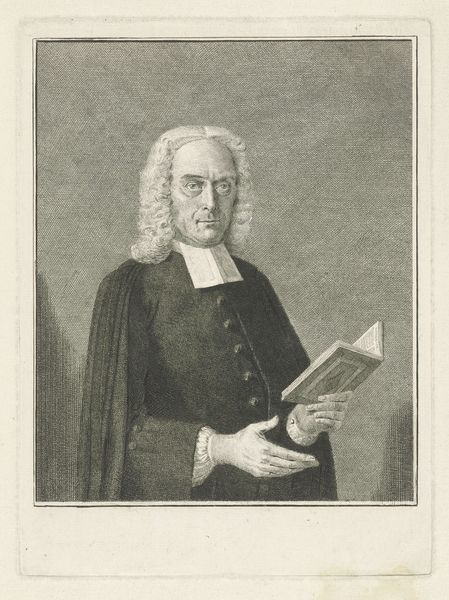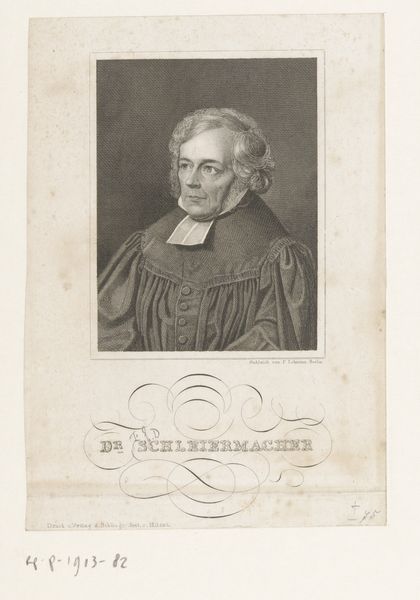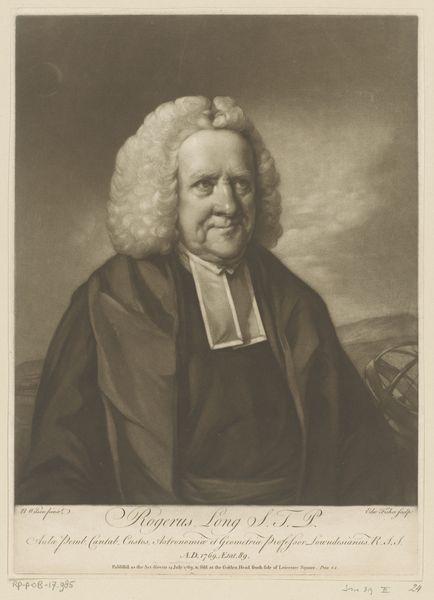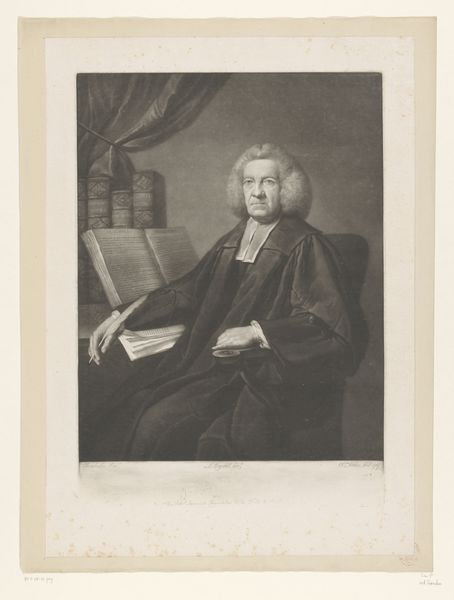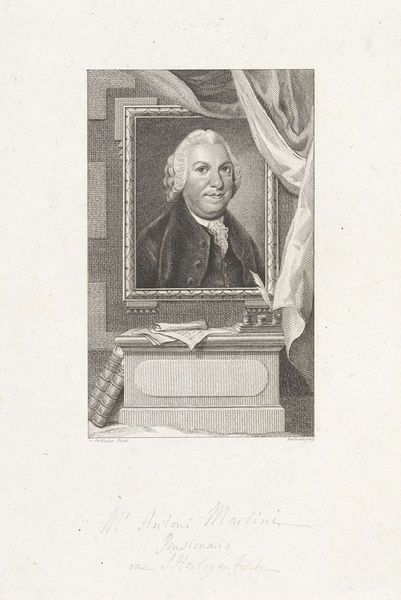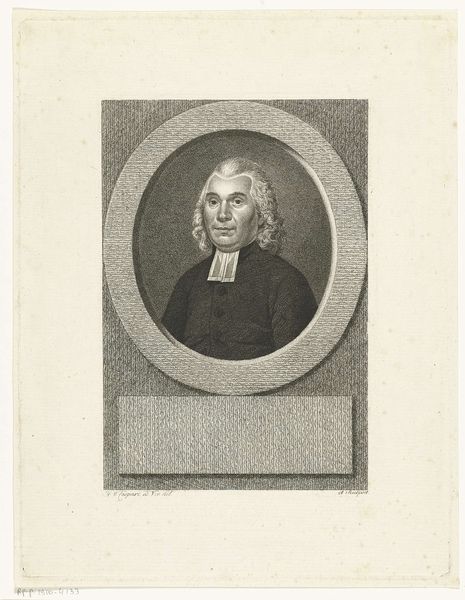
Dimensions: height 355 mm, width 255 mm
Copyright: Rijks Museum: Open Domain
Curator: Here we have an engraving of the Reverend William Romaine, crafted sometime between 1758 and 1775. The Rijksmuseum holds this print, an elegant example of 18th-century portraiture. Editor: There's an immediate stillness to this piece, a quiet confidence in his gaze, softened by the light etching of the medium. You can tell there’s weight to what he is about to say. Curator: Precisely. The medium itself – printmaking, specifically engraving – lends itself to this formality. Note the meticulous detailing, the modulation of light achieved through precisely placed lines and the composition’s classic balance, creating an image intended for dissemination and duplication. Editor: But considering Romaine's socio-political positioning is paramount, of course. He was quite influential in the evangelical wing of the Church of England at this time, known for a focus on individual salvation and reform. The portrait, with the inclusion of the book and his hand held in what seems to be a lecturing position, speaks volumes about his intellectual stance. Curator: True, but let us not overlook how the engraver, Richard Houston, plays with the textural contrast: the softness of Romaine's wig against the rigid lines of the architecture visible behind. This adds visual depth, complicating the surface and making it dynamic. Editor: It’s difficult to ignore, too, that these portraits served to create almost iconic public figures, usually of white men, and solidify systems of power and knowledge in society. This particular example can therefore also speak to privilege and power structures that need further scrutiny and reflection, even today. Curator: A fair point. However, focusing on the structure and tonal complexity evident here enriches our understanding of visual rhetoric. The controlled range and balanced values lead the eye to a focal point, resulting in this overall sense of tranquility you mention. Editor: And seeing it with a more critical gaze might offer new insights into not only artistic conventions but societal dynamics present. Curator: Indeed, each offers an alternative understanding of this impressive artwork.
Comments
No comments
Be the first to comment and join the conversation on the ultimate creative platform.

